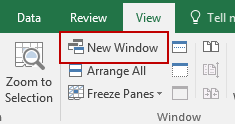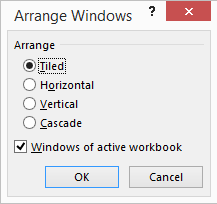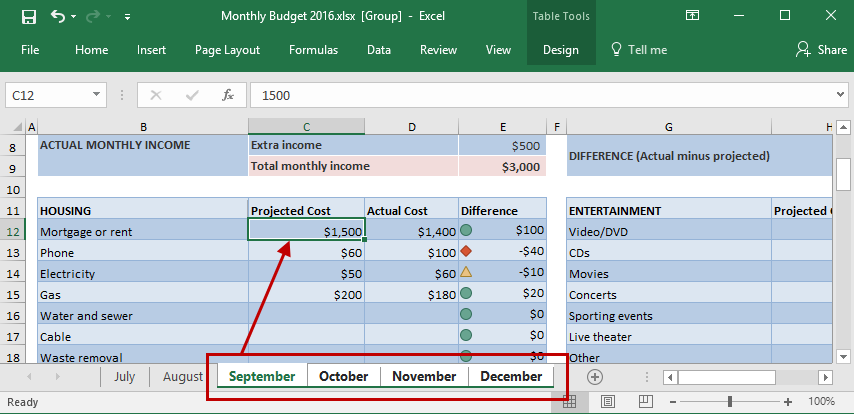From password encryption to limited file permissions, there are different ways to lock down your PDF content. But oftentimes, you may not fully appreciate what they’re capable of. Those features are crucial because though you may not realize it, a PDF file on its own isn’t as secure as you may think.
Tech Tips and Tutorials
Get handy tech tips and tutorials on just about anything and everything tech-related!
7 Tips On How To Work With Multiple Worksheets In Excel

Working with MS Excel is hard enough as it is with one worksheet. But when you work with more than one, the difficulty in dealing with that data increases tenfold with every single worksheet you add on.
To help, here are a few basic tips, handy tricks and informative tutorials to make working with multiple worksheets in Excel ten times easier for you.
1. Viewing Multiple Worksheets At Once
A simple tip to start—customizing your view. It can be easy to lose track of which sheet you’re working on, especially when you have several worksheets to deal with. To put your worksheets front and center,
a) Open your workbook in Excel.
b) Click on the New Window button for every worksheet you want to view in that workbook.
c) In each new window, click on the tab of the worksheet you want to view.
d) Once the worksheets are displayed, click on the Arrange All button in the View window
e) In the following dialog, select your arrangement view. Ensure that you put a check in the Windows of active workbook option.
From there, you’ll be able to get a bird’s eye view of every worksheet in the workbook you need.
2. Viewing More Worksheet Tabs
This is another simple tip that may go unnoticed. Because the scrollbar at the bottom hogs all the space at the bottom of your window, the number of worksheet tabs you can see is limited. An annoyance when you have more than 3 worksheets.
To view more, simply hover over the 3 dots at the left of the scrollbar. Then click and drag it to the right. You’ll instantly start seeing more of your worksheet tabs displayed.
3. Grouping Your Worksheets Together
In Excel, working with your worksheets as a single group is a quicker way for applying formulas and formatting across worksheets with the same formatting. For instance, let’s say you need to change your monthly rent costs and regular bills. If you’re moving in September and need to update your budget worksheets, grouping them together will let you input the data once to update the entire group.
a) Click on the first worksheet tab you wish to edit.
b) Then Click + CTRL (for non-adjacent worksheet tabs) or Click + Shift (for adjacent worksheets) on the other worksheet tabs to add it to the group.
c) Modify the cell as needed. Click on enter.
To ungroup your worksheets, you can right click and select Ungroup Sheets option. This may seem like a basic tip, but it’s a powerful one to have!
4. Copying Formulas Between Worksheets
One handy tip for working with data across worksheets is to copy formulas that call for repetitive calculations. We’ve covered this tip before in our post, Work With Excel Data Like A Pro With 9 Simple Tips, but is a great tip worth mentioning again:
a) With the worksheet containing the formula you wish to copy opened, CTRL + clickon the tab of the worksheet you want to copy it into.
b) Click on or navigate to the cell with the formula or data you need (in the opened worksheet).
c) Press F2to activate the cell.
d) Press Enter. This will re-enter the formula or data, and it will also enter it into the same corresponding cell in the other selected worksheet as well.
5. Using Formulas to Link Worksheets
Despite what you may think, data in multiple worksheets can be more efficient. When you need to add cell values from different worksheets, it’s possible to create and use a formula that can pull data from other worksheets that are in the same workbook and formatted similarly.
This tutorial from ExcelFormulas gives you a solid easy-to-understand explanation of how this trick can make your task easier. It goes the extra mile and even shows you how the same methods can be applied to multiple workbooks, as well.
6. Consolidating Data From Multiple Worksheets
If you need to combine data from different worksheets, this tutorial from Tuts+ Computer Skills will show you step-by-step how to combine your data from multiple sheets into one pivot table.
This is perfect if you’re keeping track of different types of information that are related but are separated in individual worksheets. You can dynamically connect them into one single worksheet so you can update them all at once. Note that this tutorial uses Excel 2013, but is virtually the same for Excel 2016.
7. Importing Multiple Excel Sheets from Multiple Excel Workbooks
This following trick from ExcellsFun is a bit more advanced, but helpful for getting your Excel data from different worksheets and workbooks into an individual worksheet using PowerQuery.
Using the example of track sheets being used to analyze sales rep performance, this tutorial also links out to a resource where you can access those practice files for a good hands on learning experience to master this skill.
What tips do you have for working with multiple Excel worksheets?
How To Insert A Title Block?
Part 13 of 13 in our How To Use AutoCAD series
Because AutoCAD projects are highly detailed and require accuracy, being organized with how you work is important. Imagine dealing with a dozen CAD design files with detailed information outlining a single part. If you aren’t organized in how you label each drawing for printing, then recipients won’t have the necessary information for them.
This is why inserting a Title Block in your AutoCAD drawing is essential for plotting (printing) your drawings, especially in a production environment. A Title Block is used to name the drawing part, time and author. Essentially, it provides important information for when the document is printed.
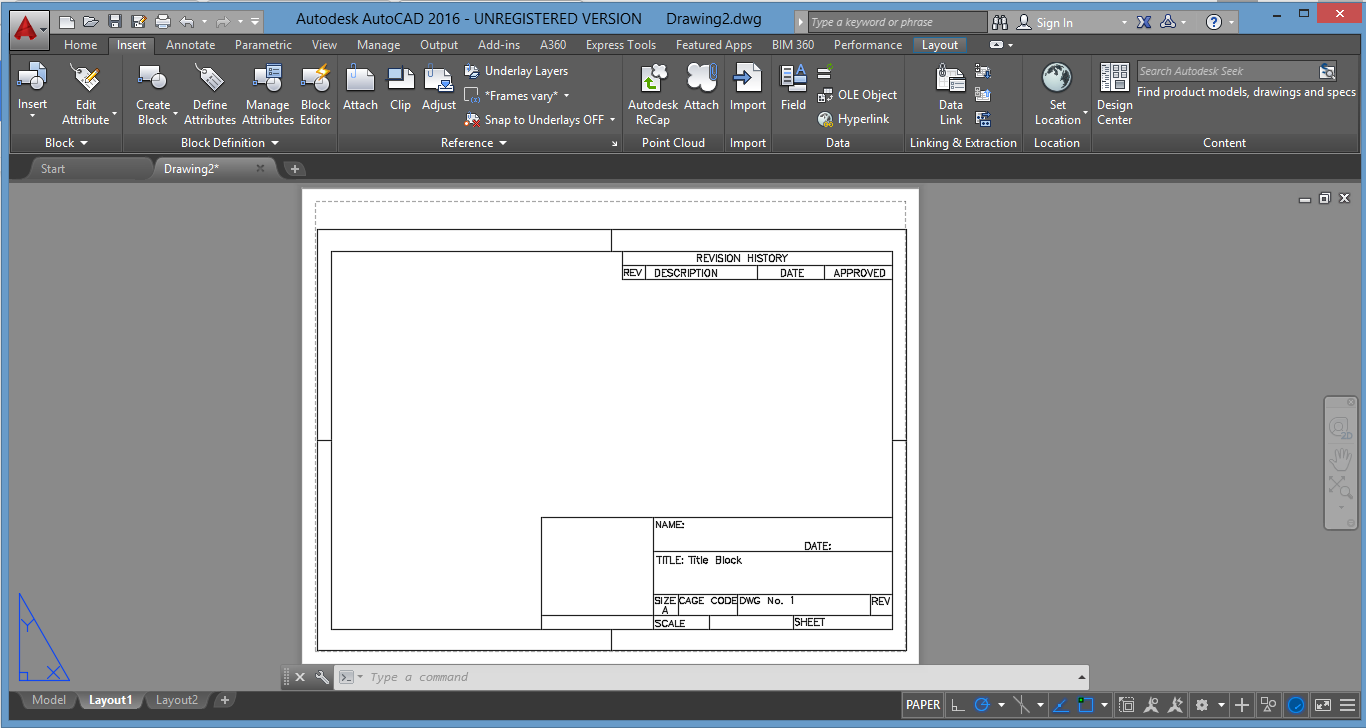
In AutoCAD, you can create your own Title Block template or import a pre–made template. To insert a title block, follow these steps:
1. First, locate or download a Title Block template. There are some basic templates that are already included in the AutoCAD. As the good folks at AutoDesk Knowledge note, the Title Block templates are usually the template files starting with “Tutorial-”.
2. Open up a blank drawing and click on the “Layout” tab on the bottom left corner. As you can see by the looks of it, the Layout tab is used for the plotting stage of the production. Right click on the Layout 1 and select Page Setup Manager.
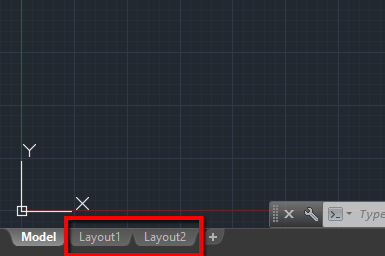
3. Click “Modify” and you will be presented with a pop up window. The most important thing you should pay attention to is the paper size. By default, this is set at (8.5 x 11 inches), so be sure to set it up so that it matches the size of the Title Block template. Select “Landscape” on the Drawing Orientation panel and hit “OK”. We’re now ready to import the template.
4. Click on the “Insert” tab and then on the “Insert” button on the far left side.
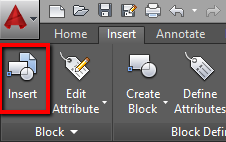
From the pop up menu, click on Browse and select your template. Leave the check boxes as they are – only check the “Specify on screen” box. Hit “OK”.
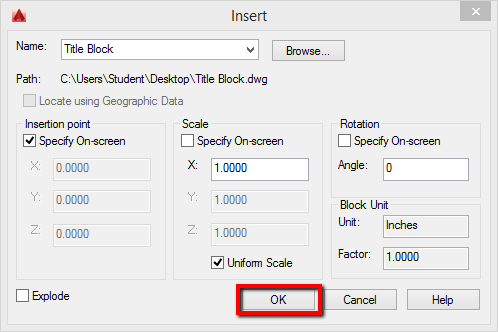
5. Position the Title Block and left-click to put it in place. Note that the dashed line represents the print border, so keep in mind to position the Title Block within it.
From here you can further edit the individual Title Block elements by entering the “Block Editor” on the Insert tab. This can be extremely useful for repurposing existing title block templates and even customizing your own.
How To Trim Objects Quickly?
Part 12 of 13 in our How To Use AutoCAD series
Along with the many object manipulation features AutoCAD provides, the Trim command is another common feature you’ll need to be familiar with as you modify your CAD drawings.
Trimming objects in AutoCAD is useful for merging objects at the place of their intersection. The easiest way to trim objects in AutoCAD 2016 is to use the “Trim” command located on the Modify panel.
1.First, select the objects you want to trim. You can click on them individually or you can left click and drag to group the objects.

2.Right click on the blank space to finalize the selection.
3.Left click on the lines to trim them. Right click or enter to finalize the trimming.
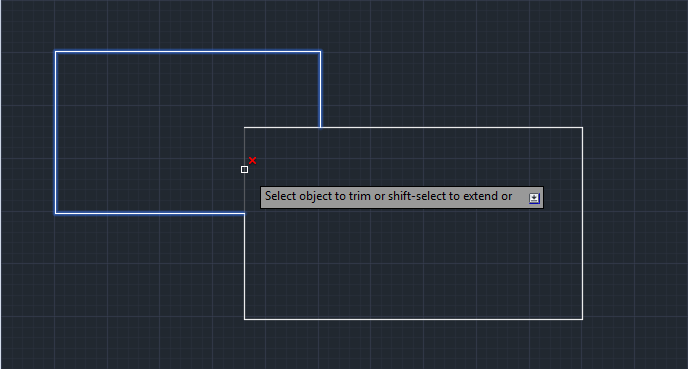
Note that you can only trim the lines that intersect. The best tip for deleting unwanted lines would be to use the “Erase” command, which is also located on the Modify panel.
How to Combine and Merge PDFs — Complete Tutorial
There are numerous reasons why you might want to combine multiple PDF documents into one:
- Save on storage space
- Organize your work better
- Reduce document cluttering
- Password protect a single PDF instead of 20 of them
- Put together a report from different sources
Whatever the case may be, one thing is for certain: merging PDF is a good trick to have in your bag for any future document-related work. PDF is here to stay, as it has been for over 20 years.
The big question is, what is the easiest way of combining PDF documents and how much does that cost?
To answer your question, we prepared a comprehensive tutorial on some of the most efficient ways of merging PDF, as well as the tools that we used. We’re leaving the exact choice to you. Let’s take a look.
Merging PDF on Your Desktop
The first thing that comes to most people’s mind when it comes to this is to use a PDF merging software to combine documents. This is really smart and let me tell you why.
In the age of data breaches and low document security, it’s good to try and keep everything local. Document writing, management, conversion and other mandatory work (such as merging) can all be done from the comfort of your desktop, without requiring an Internet connection.
Not just that, but you’ll also be able to manage PDFs of all sizes, from smaller ones that weigh in at just around several KB to the gigantic 100 MB, 300 page documents. Let’s see how you can combine two PDFs on your desktop.
1) Open the first document in Able2Extract. Don’t worry, you can download the software as a 7 day free trial.
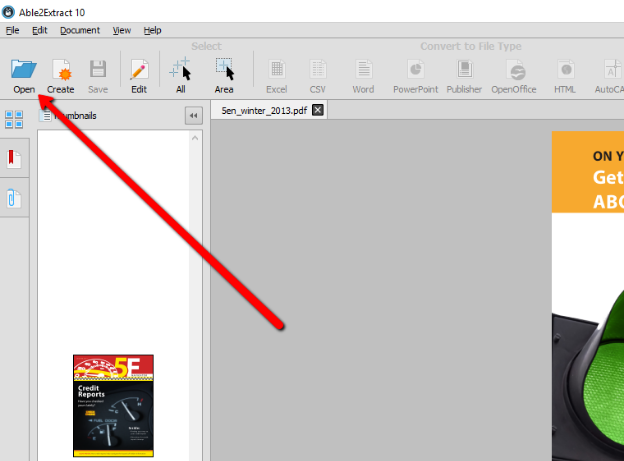
2) Click on “Edit” and then “Insert from PDF”.
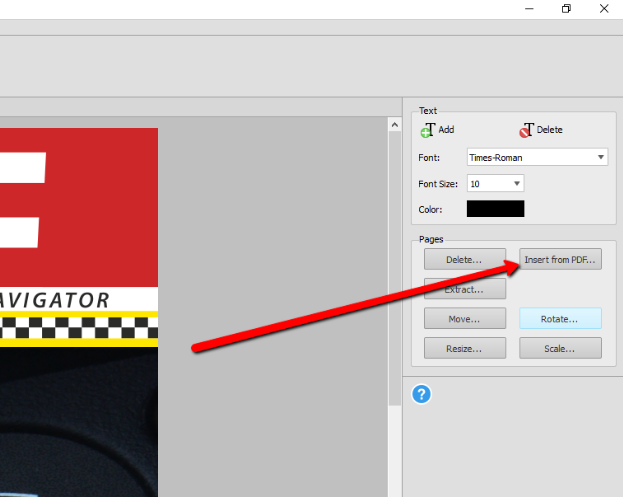
3) Select the other PDF document from the pop up and click Open. Specify where you’d like to insert (merge) that new PDF. Click Insert and job done!
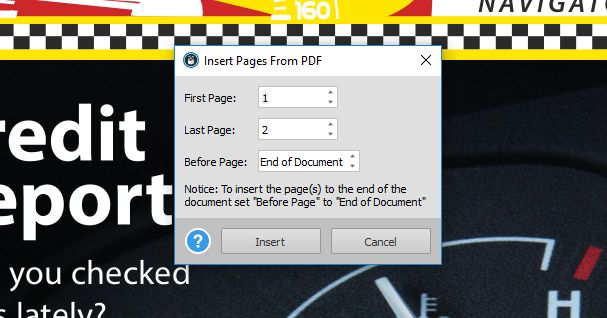
How to Merge PDF Documents Online
Desktop tools are great for for merging classified, larger PDF documents, but what about a quick way to combine smaller files for let’s say emailing purposes? This is where you can resort to online tools for PDF to help you merge PDF quickly and effortlessly.
Online PDF merging tools all have, somewhat, similar characteristics. They are particularly good for smaller and non-classified PDFs, which make the bulk of most people’s documents. However, they do have some downsides, most commonly:
- They usually have file size limitations. For example, you can upload files up to 5 MB for free and pay for larger files. However, this depends on the individual tool.
- Lower document security. Every online tool depends on you uploading the file to the company’s servers, which means it kind of gets out of your hands.
- Workflow is slower. Since everything operates online, your PDF merging speed depends on the internet connection and the PDF file size.
You can find tools for online PDF merging by just Googling it. We tested a bunch of them and found out that Xodo PDF Merger did the best job, by far. The tool is intuitive and easy to use:
- Upload PDFs from your computer, Google Drive, or Dropbox.
- Click the Merge button and the tool will automatically merge your documents, which you can immediately download to your device.
The Verdict
Which approach you’ll take when combining PDF documents is completely up to you. We advise using a dependable software application for larger and more important documents, as the comfort and speed of working in a local environment are unmatched. On the other hand, there are situations where you’ll need to quickly combine smaller PDFs and email them, which is exactly where you’ll use a reputable online converter.
